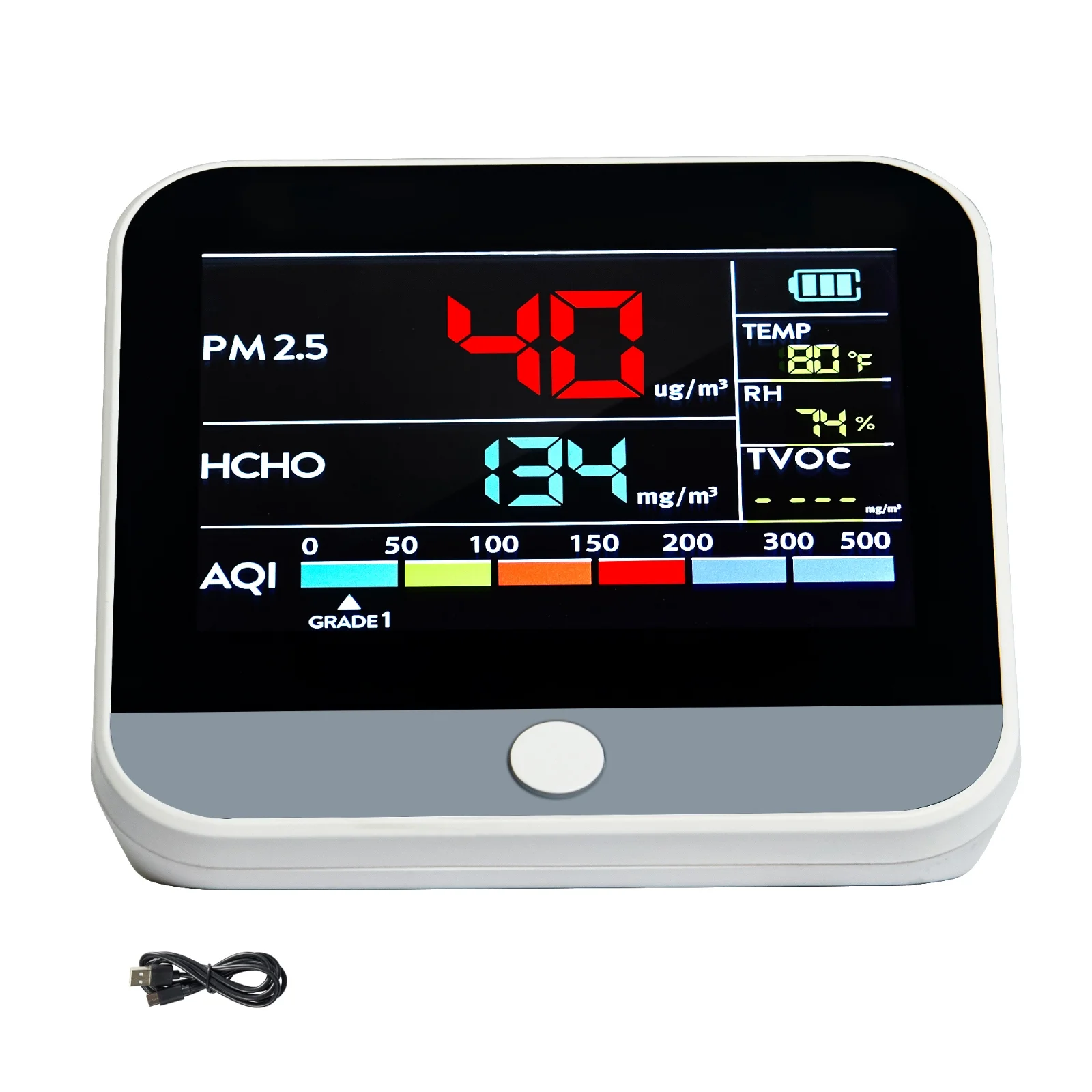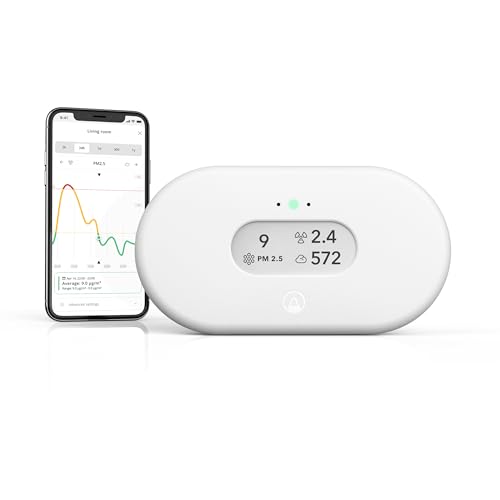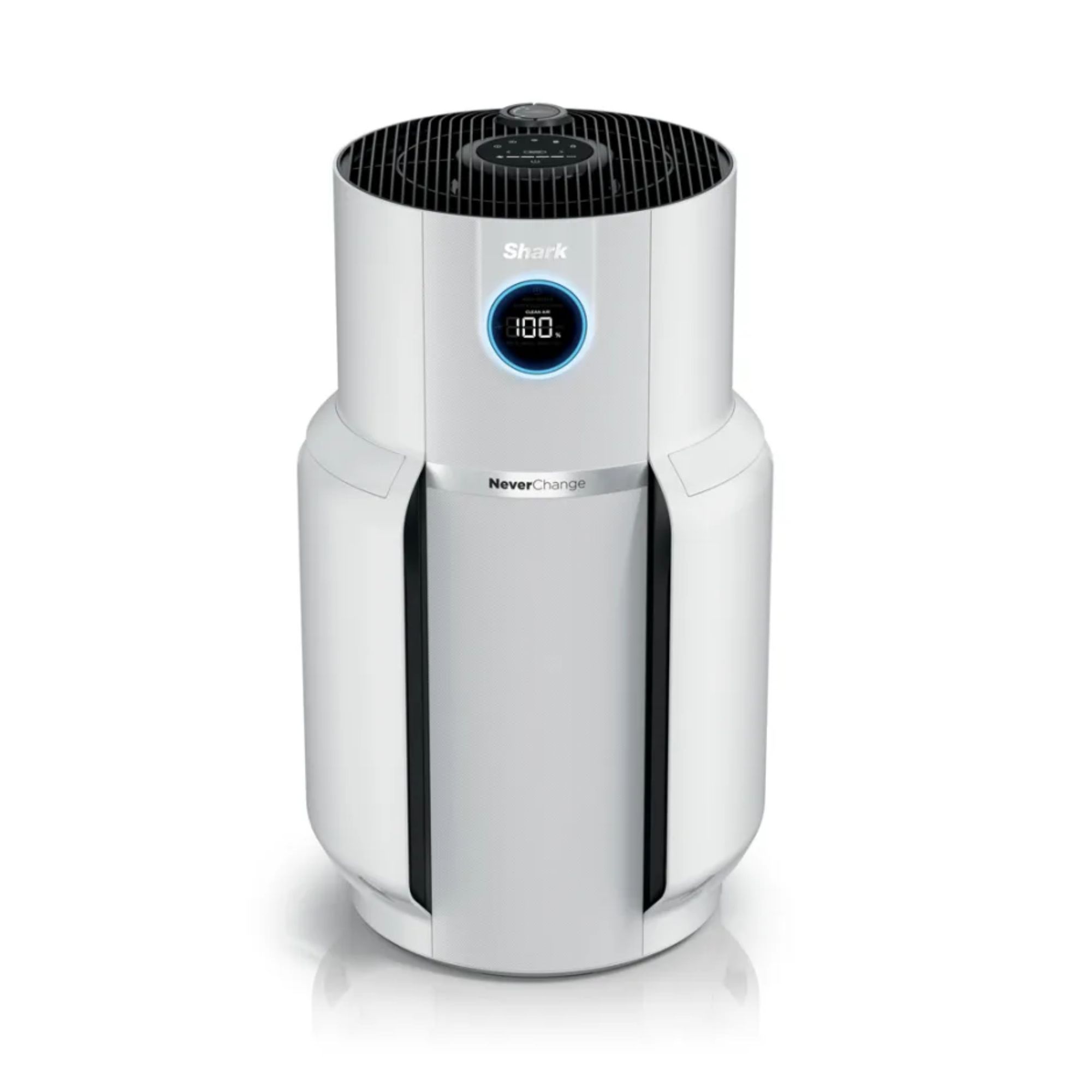
We often think of air pollution as something that exists outside, but in reality, the air inside our homes can be just as polluted. Cooking, cleaning and living with pets can all contribute to poor indoor air quality that can affect our health and comfort.
That's where air quality monitors come in. These small devices offer real-time insight into what we're breathing at home, air quality, and ventilation – and ultimately improve our wellbeing.
Understanding and managing our air quality is more than a luxury, it's an essential step to living a healthier, cleaner life at home. I caught up with some industry experts for the full low-down on why these devices are so important alongside the best air purifiers.
What does an air monitor do?
Like a thermostat displays temperature and a humidistat displays humidity levels, an air monitor shows you what harmful particles are present in your indoor air.
'An indoor air quality monitor helps you understand the levels of common pollutants inside your home, like volatile organic compounds (VOCs), particulate matter (PM), and carbon dioxide (CO₂),' shares Ken Nelson, indoor air quality expert and group sales manager at Panasonic.
He adds, 'When these levels rise above safe thresholds, the monitor alerts you so you can take action to reduce exposure.'
You might find that, after cooking, dusting or executing any of the common mistakes lowering your air quality, the air quality monitor will reveal increases in certain particulate matter.
Design expertise in your inbox – from inspiring decorating ideas and beautiful celebrity homes to practical gardening advice and shopping round-ups.
Here's a brief, simplified overview of what they mean:
- PM1-sized particles are smaller than 1 micron and include very fine allergens, viruses, and bacteria.
- PM2.5-sized particles include smoke from natural sources like forest fires and anthropogenic sources like cigarettes and fossil fuels.
- PM10-sized particles include larger particles like dust, pollen, and bacteria fragments that can irritate the body.
- VOCs (volatile organic compounds) can include harmful gases and particles like formaldehyde, benzene and toluene.
- Some air quality monitors will list formaldehyde separately as HCHO.
'Air quality monitors vary in design from simple plug-in models to more advanced handheld or integrated systems,' Ken continues.
It's really up to you how simple or comprehensive of an air quality monitor to invest in, as some can monitor humidity and temperature for a more complete picture of your home's air quality.
Why do you need an air monitor?

Managing your air quality will improve your sleep, help respiratory issues, reduce allergy symptoms, and improve our overall health and wellbeing.
To be able to manage your home's air quality and breathe cleaner, healthier air, you need to understand it first. By monitoring exactly what's in your air, you'll learn what is lowering your air quality, and you'll know when it's time to take steps to improve it. This can be done by improving ventilation in your home or knowing the best place to put your air purifier.
'This real-time insight supports a healthier indoor environment for you and your family,' Ken explains, adding 'from visible pollutants like smoke and pet dander to invisible ones such as VOCs or even viruses, your air can contain a range of contaminants.'
'Some may seem harmless, but over time, they can affect your quality of life. A monitor helps you pinpoint which pollutants are present – whether from everyday activities like cooking or seasonal changes – so you can take informed steps to improve your home’s air quality,' he continues.
I can attest to this on a personal level. As somebody with allergies and asthma who's triggered by the smallest common household allergens, managing my air quality has massively reduced symptoms, so much so that I don't remember the last time I had a flare-up at home.
Asthma and allergies aside, managing your home's air quality will improve respiratory health, reduce prevent mold and mildew, improve sleep and reduce stress.
Joe Haycock, HVAC expert and vice president of Fresh Air Concepts, elaborates: 'Instead of guessing, you can clearly see when and why you need to improve the air quality. Over time, it can also identify recurring problems so you can deal with them consistently, not just occasionally.'
Home air quality essentials
Here are some of the best-rated air quality monitors available, as well as the best air purifier we've tested, the Shark NeverChange MAX.

This 8-in-1 air quality monitor from SKYSHALO is a great entry-level option, sensing PM1, PM2.5, PM10, VOC and formaldehyde. It refreshes every 1.5 seconds for accurate, real-time information.

One of the highest-rated air quality monitors available (that doesn't cost upwards of $500), this device from Airthings can detect the usual PM and VOC counts, as well as humidity, temperature, CO2 and air pressure.

Of the 17 air purifiers we've tested at Homes & Gardens, the Shark NeverChange MAX comes out on top. It's a fast, efficient, and powerful purifier that releases a fresh scent while it works, and it has washable filters that avoid you having to replace its HEPA filter for up to five years. I still use it in my home almost a year since testing, and it consistently keeps our air quality at the right levels.
Read more in my full Shark NeverChange Air Purifier MAX review.
Meet the experts

Ken plays a pivotal role in aligning Panasonic's industry-leading Indoor Air Quality (IAQ) solutions, with 14 years of experience in HVAC and ventilation.

Joe Haycock is the vice president at Fresh Air Concepts, a family-owned and operated HVAC company with nearly 30 years of experience serving residential and commercial customers in and around Baltimore.
Next, find out how to choose an air purifier based on your home's needs, or learn how to clean your air purifier to return it to its former purifying glory.

Dan is the Home Tech Editor for Homes & Gardens, covering all things cleaning, sound, smart home, and air treatment across the Solved section.
Having worked for Future PLC since July 2023, Dan was previously the Features Editor for Top Ten Reviews and looked after the wide variety of home and outdoor content across the site, but their writing about homes, gardens, tech and products started back in 2021 on brands like BBC Science Focus, YourHomeStyle and Gardens Illustrated.
They have spent more than 400 hours testing and reviewing vacuums, soundbars and air purifiers for Homes & Gardens.
Dan has a BA in Philosophy and an MA in Magazine Journalism. Outside of work, you'll find them at gigs and art galleries, cycling somewhere scenic, or cooking up something good in the kitchen.
